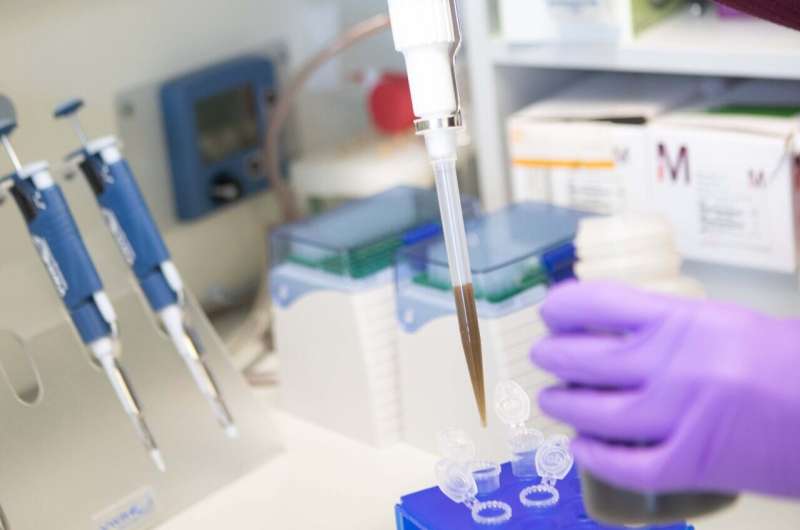This article has been reviewed according to Science X's editorial process and policies. Editors have highlighted the following attributes while ensuring the content's credibility:
fact-checked
peer-reviewed publication
trusted source
proofread
Most of the glyphosate in European rivers may not come from farming, researchers suggest

A research team at the University of Tübingen has found that most glyphosate that ends up in European rivers likely does not come from herbicides, as previously assumed; instead, it may be the result of additives to detergents.
For the study, Professor Carolin Huhn of the Institute of Physical and Theoretical Chemistry and colleagues from the Geo- and Environmental Center conducted a large meta-analysis on data from European and US water protection authorities. The study has been published in the journal Water Research.
Until now, the use of glyphosate as a herbicide in agriculture was considered to be the main reason for its presence in bodies of water worldwide. However, European reduction measures have not led to any noticeable reduction in the environment.
Professor Huhn's study suggests that another source has been overlooked for decades. The hypothesis is that certain aminopolyphosphonates used, for example in laundry detergents, are converted to glyphosate in the sewage sludge of wastewater treatment plants.
A wealth of measurement data
In order to trace the pathways of glyphosate into rivers, the working group at the Institute of Physical and Theoretical Chemistry and colleagues from the Department of Geosciences analyzed a long-time series of glyphosate concentrations in rivers gathered mainly from authorities responsible for water protection in Germany, France, Italy, Sweden, Luxembourg, the UK, the Netherlands and the U.S.
Some of the data sets reached back to 1997. The researchers included data from about one hundred locations in their study.
The starting point for the study was the observation that glyphosate concentrations in European rivers show a strong seasonality with high concentrations in summer and low concentrations in winter.
Yet, with agriculture being the dominant source, we would expect increased concentrations from agriculture during the main application phases in spring and autumn, as well as increased concentrations after rain events. Glyphosate is used to prevent unwanted plant growth in agriculture, as well as in residential areas and in rail track beds.
"In soil and water, glyphosate is partly converted to aminomethylphosphonic acid, or AMPA. Both substances can be mobilized by precipitation and find their way into rivers," says Huhn, who is also the spokesperson for the Environmental Systems Platform, part of the University of Tübingen's Excellence Strategy.
This seasonal profile is known from substances entering surface waters from wastewater treatment plants, such as pharmaceuticals and household chemicals. Calculating the amount of glyphosate being transported in a river per day, a fairly constant input is derived from the data.
The concentration peaks expected from agricultural sources were only observed at very few, exclusively agricultural, measuring points in Europe. Furthermore, the input pattern of other herbicides is almost opposite to the one of glyphosate.
Thus, the study, carried out with Tübingen geoscientists Dr. Marc Schwientek, Dr. Hermann Rügner, Professor Stefan Haderlein and the chemistry Ph.D. students Sarah Bieger and Lisa Engelbart, showed that the main source of glyphosate and AMPA in rivers must come from wastewater from sewage treatment plants.
"A survey of literature data shows that glyphosate is found in all the wastewater treatment plants examined in Europe, and its concentration was remarkably constant throughout the year," says Huhn.
A source from households?
"The detailed analysis of the millions of individual values shows us that municipal wastewater plays a role. And some of the findings of the study also show us that we have to locate a source for glyphosate close to households," says Huhn. The researchers believe there must be a dominant input separate from the use of herbicides; the patterns in concentration could not be explained any other way.
"However, everything we cannot explain about the data disappears if we assume that we are not really looking at glyphosate which was previously used as a herbicide, but instead at glyphosate that has formed from a larger substance," says analytical chemist Huhn.
The researchers compiled a list of criteria from their data, and identified a substance chemically related to glyphosate, which would resolve all the questions raised from the meta-analysis. Their hypothesis is that glyphosate is a transformation product from aminopolyphosphonates which are used extensively in Europe and especially in laundry detergents.
Initial laboratory tests have now been completed and confirm the hypothesis of glyphosate formation in wastewater treatment plants from this laundry additive. However, there is also some good news: "We do not see glyphosate formation when we simulate conditions directly in the washing machine."
The results may explain why it has not been and will not be possible to reduce glyphosate pollution in rivers in Europe through herbicide reduction strategies, Huhn summarizes. The new glyphosate source must be verified in independent studies.
Authorities must discuss how to continue surface water monitoring and how to possibly regulate the aminopolyphosphonates or improve elimination rates in wastewater treatment. "We are aware that our findings may have far-reaching implications, including for industry and policymakers, but also for how surface water monitoring can be improved.
The situation in the U.S. is different from that in the EU; concentration patterns of glyphosate in U.S. river water closely follow those of other herbicides, indicating a dominant agricultural input. In contrast to Europe, aminopolyphosphonates are hardly used in the U.S. in laundry detergents.
More information: M. Schwientek et al, Glyphosate contamination in European rivers not from herbicide application?, Water Research (2024). DOI: 10.1016/j.watres.2024.122140
Journal information: Water Research
Provided by Universitaet Tübingen





















